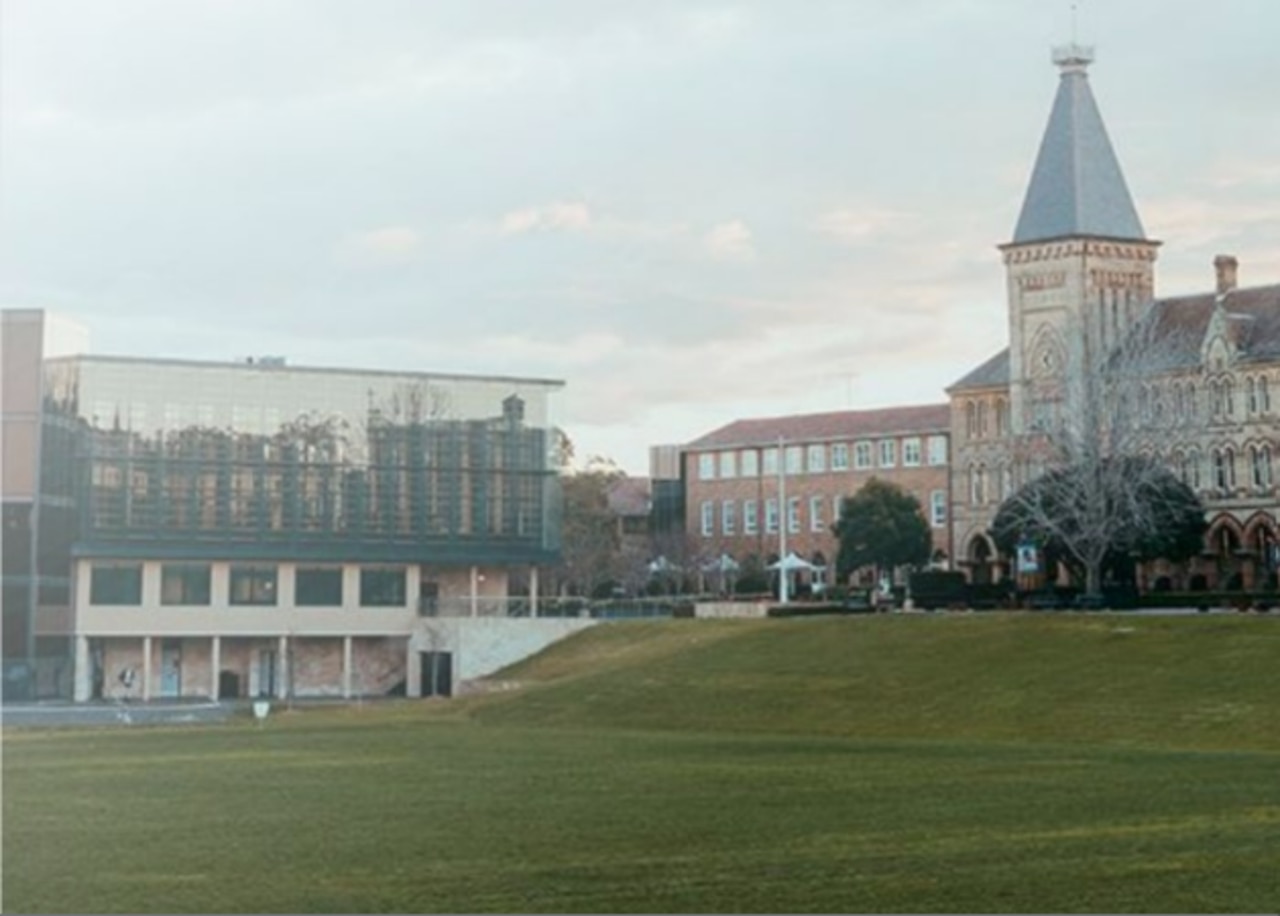Kids will be kids
"IT'S a very surreal situation, finding yourself in front of a group of kids," says Bernie Howitt. "It is hard work."

"IT'S a very surreal situation, finding yourself in front of a group of kids," says Bernie Howitt, head of curriculum at Narara Valley High School on the NSW Central Coast. "It is hard work."
Howitt is planning to retire this year after 36 years teaching history and the humanities.
"Of the kids sent to me (for misbehaving), 90 per cent of the problems are disengagement in the classroom. Sometimes it's because it's a difficult kid. Often it's solved by talking to the teacher, have you thought about doing it this way, and it helps if kids feel they're a part of it."
The incidents of extreme student misbehaviour that make the 6pm news tend to involve violence and weapons, but these episodes are relatively rare. The behaviour that causes teachers the most trouble is less dramatic, but occurs so frequently it disrupts the class. The noisiest minority end up running the classroom.
Education researcher and psychologist Andrew Martin says student behaviour has become a serious issue.
"Teenagers are bigger people now, they're unsupervised for longer periods, there are different temptations, and discipline in schools has changed," he says.
"In the old days, a teacher pulled out the cane or the strap. In schools today, teachers connect with kids differently. In the main I find teacher-student relationships are more positive, more mutually respectful, and less based on fear."
La Trobe University education professor Ramon Lewis, who is one of the few researchers in the area and works with schools in implementing behaviour management strategies, does not believe children's behaviour is necessarily worse but says it is more confrontational.
"I don't think they're more nasty or anything; I think in some cases they come to school less socialised and they need to be educated about behaviour at school as much as anything else," he says.
Lewis says primary schools have always viewed their job as including teaching students social skills and how to manage their own behaviour, but it is a role that secondary schools are still coming to terms with.
"Secondary teachers see themselves as teaching subjects, they don't see themselves as developing students. What we're talking about here is really another part of the curriculum," he says.
Parents also present a new challenge to teachers' authority, where in years past they might have reinforced it.
Lewis cites the example of a parent who rang a principal to challenge their child's punishment before the student had even arrived at the principal's office, the child having sent a text message as soon as they were ordered out of the classroom.
"In the past month, I heard of a student who was given a detention and the mother rang up and asked could she sit in detention instead because her child had a tennis lesson," he says.
"There used to be more solid family, church and community input. There were more reasons for them to do the right thing. Kids today have another life. It's a new era, they have an independent life from their family and it's all online. It gives them a sense of independence and the message is 'Don't get caught', not 'Don't do the wrong thing'."
The latest survey of staff in the nation's schools, released in November by the federal Department of Education, Employment and Workplace Relations, found about 30 per cent of primary teachers are dissatisfied or very dissatisfied with student behaviour. The level of dissatisfaction rises in secondary schools to more than 35 per cent.
Macquarie University honorary fellow Robyn Beaman, with colleagues in the special education centre, has reviewed research conducted across the past 20 years.
"The tabloid version of shocking assaults happens from time to time, but is not what most teachers experience every day," she says.
"What they experience most days is relatively trivial but of a very high frequency and disruptive. It's things that stop them from teaching and students from learning, like calling out, poking or touching another kid, particularly in primary school, knocking books off a desk, eating, chatting to their neighbour.
"It's the same sort of behaviours that people complain about. Every kid calls out in class at one time but the problem kids do it more often. The most difficult kids do what other kids do, the same sorts of behaviour, but more so.
"Similarly, high school misbehaviour is the same as primary school, but more so. They don't suddenly get worse, they're persistent in what they do."
Beaman says the average teacher can expect two to nine students in a class of 30 to have some sort of behaviour problem. If looking more broadly at just mucking-up, 15 per cent of primary students, rising to 20 per cent of high school students, will cause their teacher trouble.
The prevalence and types of misbehaviour in classrooms is persistent across time, and different countries, with similar rates reported in Britain and the US. Even in Hong Kong, which has an international reputation for diligent, dedicated, well-behaved students, teachers report 15 per cent of the average primary school class misbehaves.
There is no doubt that schools have changed, and society has changed. Fifty years ago, one of the first skills a new teacher learned was how to wield the strap without bursting a blood vessel. Children were seen and not heard, in ordered rows of desks facing a blackboard at the front of the classroom, watching the teacher who told them what they should learn. There was no internet, no home computers; pencil and paper was as hi-tech as it got.
The classrooms of today's students bear little resemblance to those endured by their parents only 20 or so years ago. The cane and the strap have all but disappeared, and many arrive for their first day of school saying: "Google it." Children are encouraged to challenge and question their teachers as autonomous learners rather than the passive recipients of their teacher's knowledge.
A decade ago, teenagers not intent on tertiary study could leave school at 15 to pursue a trade or a get a job. Today, legislative changes across the states require students to remain in some form of education or training until they turn 17, leaving teachers to deal with a larger group of uninterested and disaffected youth.
Classrooms are more diverse, with a broader range of students from different cultural groups, and students with disabilities or learning difficulties, who were once educated in separate schools, are increasingly integrated into mainstream classes.
Growing numbers of students are diagnosed with behavioural and mental health conditions, with the proportion of high school students taking a psychiatric drug doubling in the past decade; autism now affects 50 in every 10,000 children compared with between three and six two decades ago.
At the same time, students are coming to school with increasing levels of family and social dysfunction, which is not limited to children from poor or disadvantaged backgrounds, and some blame modern, permissive parenting styles for failing to instil manners and good behaviour.
As one researcher notes: "Self-oriented, mortgage-burdened, distant and indulging parents in comfortable homes are also failing to teach acceptable behaviour, set reasonable limits or resist children's demands."
Martin, whose research focuses on student motivation and engagement, says children are products of their environment, which includes their home, community and wider society. Children come to school displaying the behaviour they've learned at home, which, with the rise in social dysfunction and family breakdowns, is not always what it should be.
Howitt agrees that student boredom in class is a strong factor behind bad behaviour, but sometimes difficult students come from difficult homes and it is incumbent on teachers to understand their students.
"For the kids who are often sent to me, school is the safest place in the day for them," he says. "Some of the issues we have to deal with in this school are horrendous.
"You have to be much more of a counsellor (than when I started), my job as head teacher has a very high welfare component."
Martin says students who are engaged and interested in what they're learning tend not to cause too much trouble in class, but it is a chicken and egg problem.
"Is it lack of engagement leading to poor behaviour or is poor behaviour part of the disengagement?" he says.
"It differs from child to child, and you need to understand their background and then start investigating more deeply."
Greg Whitby, executive director of the Catholic school system in western Sydney, trained as a teacher in the 1970s and spent almost 20 years in the classroom at primary, secondary and tertiary levels. He says the biggest challenge facing teachers is the enormous changes that have occurred outside the school gates.
"Kids are no different than they were 30 years ago, they're just a lot more savvy and come better prepared to live in and understand the tools of the contemporary world than many of their teachers," Whitby says.
"But we have a model of schooling that's probably not appropriate for the world in which we live. It was based on a 20th-century mass-production model, which was all right when the world was like that. Now we're living in a connected digital world and kids respond very differently, but we haven't changed school."
Whitby says many issues behind misbehaviour in schools relate to the archaic structure of schools, and his diocese is implementing different approaches that better suit the way students, and the wider world, work.
"We can't sustain the model that says you have 30 students, one teacher, start from 9 and finish at 3 in a contemporary world," he says. "Attendance at school is compulsory . . . but learning is optional. What we're doing is saying learning is now compulsory, attendance can be optional.
"What does it mean to attend school when you can go online and be involved in learning communities on cyber space, you can break up classes and work in different ways?
"Then you have to work with the individual child who isn't engaged, find things that will engage them and start at their level.
"The complexity of teaching has increased. We know more about learning and teaching (than) we did before. Once you hit the classroom, you have to continually relearn your craft, and that's very demanding."
yourschool@theaustralian.com.au


